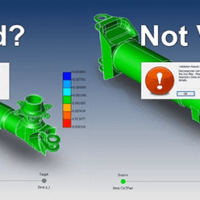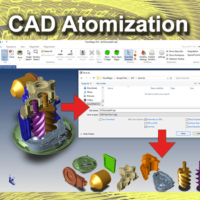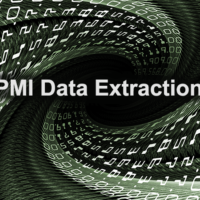
by Brad Strong | Jan 4, 2018 | Blog, CAD Translation, CAD Validation, What's New |
A Recent CAD Forum Discussion Reading various CAD forums can be illuminating. Here’s a paraphrase of a discussion on a recent CAD forum where a CAD engineer is looking for a way to test if the original CAD model has been changed in any way when translating from CATIA to STEP to SOLIDWORKS. So the question is, if CNC machining or other operations are going to be performed on models that were translated from the original, how do we know that those models are accurate? Let’s look at the question and some of the answers. Question We do aerospace design, and are sending a lot of models to subcontractors for CNC machining. During the CATIA to STEP...

by Brad Strong | Nov 13, 2017 | 3D Printing, Blog, CAD Diagnostics, CAD Performance, CAD Translation, What's New |
This article will demonstrate how materials are applied to models in TransMagic R12, and how parts and assemblies can then be interrogated for Mass Properties. Mass properties are particularly useful if you are generating quotes or estimates, and need to know the weight or volume of materials for the part or complete assembly. Another common use for mass properties is to get the volume calculation for estimating 3D printing print times and material costs. The Mass Properties dialog box also provides moments of inertia and allows you to create three planes that intersect at the centroid. Applying Materials Parts should already have a default material assigned;...

by Brad Strong | Oct 23, 2017 | Blog, CAD Translation, What's New |
Assembly Restructuring allows you to work with the parts you have and restructure components as necessary to fit your design or manufacturing objectives. Being able to restructure assemblies gives you viewing and functional flexibility, even if you no longer have access to the originating CAD system. Where necessary, parts can be renamed, instance groupings can be broken, new subassemblies can be generated from existing parts, parts can be removed individually from subassemblies, true assemblies can be flattened and multi-body parts can be turned into true assemblies. Creating Assemblies from Multiple Solid-Body Parts Figure 1 shows a single part (with...

by Brad Strong | Oct 16, 2017 | 3D Printing, Blog, CAD Translation, What's New |
CAD Atomization refers to the process of converting whole assemblies to separate, independent parts. This is a one-button process which can be used for both CAD and polygonal output. 3D printing houses can use Atomize to output all parts in an assembly to STL. If you are planning to do polygonal output, be sure to check Settings and adjust polygon density before outputting STL or other polygonal formats. This article covers various STL output settings. The Atomization process works whether you are using an assembly or a multi-body part (multi-bodied parts are single parts composed of two or more solid bodies); in both cases, parts and bodies are converted to...







